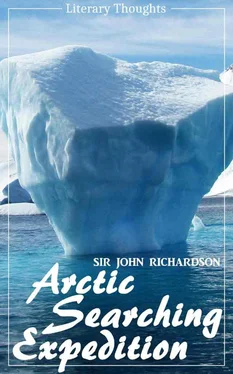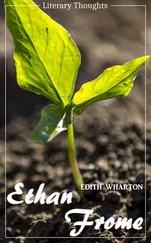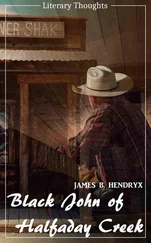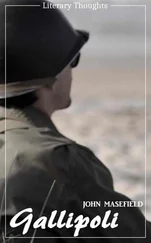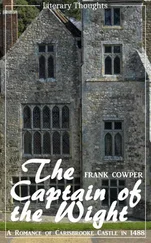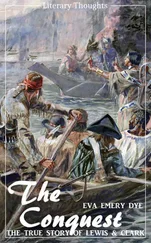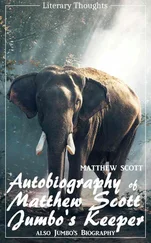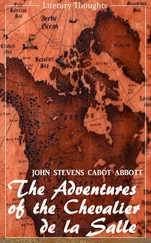June 23rd.—The moschetoes were exceedingly numerous and troublesome during the night and this morning. Our route lay through Sandy Lake and Grassy River, where the country retains the same general aspect that it has on Sand-fly and Serpent Lakes, and where the prevailing rock is a brownish-red, fine-grained sienite, resembling a sandstone. The same rock abounds in Knee Lake, where, however, we saw, for the first time since leaving the south end of Lake Winipeg, fragments of white quartzose sandstone; but did not find the stone in situ. The sienite, when traced, is found to pass into hornblendic granite, by the addition of scales of mica to some parts of the same beds. The high banks of Knee Rapid consist of sandy loam crammed with boulders.
The Tabanus, named by the voyagers "Bull-dog," has been common for two days. The current notion is, that this fly cuts a piece of flesh from his victim, and at first sight there seems to be truth in the opinion. The fly alights on the hands or face so gently that if not seen he is scarcely felt until he makes his wound, which produces a stinging sensation as if the skin had been touched by a live coal. The hand is quickly raised towards the spot, and the insect flies off. A drop of blood, oozing from the puncture, gives it the appearance of a gaping wound, and the fly is supposed to have carried off a morsel of flesh. In fact, the Tabanus inserts a five-bladed lancet, makes a perforation like a leech-bite, and, introducing his flexible proboscis, proceeds to suck the blood. He is, however, seldom suffered to remain at his repast; unless, as in our case, he be allowed to do so, that his mode of proceeding may be inspected. These Tabani are troublesome only towards noon and in a bright sun, when the heat beats down the moschetoes.
In the afternoon we passed through Primeau's Lake, having previously ascended three strong and bad rapids. At the middle turn of the lake a moderately high, long, and nearly level-topped hill closes the transverse vista. The channel between the eastern and western portions of the lake winds among extensive sandy flats, covered with bents, and in some places there was a rich crop of grass not in flower, but seemingly a Poa. In the evening we encamped at the "Portage of the Exhausted," on the river between Isle à la Crosse and Primeau Lakes. The rock here, and on the two lakes below it, is the brownish-red slaty sienite already mentioned: it has much resemblance to a rock on Lakes Huron and Superior, which seemed there to be associated with a conglomerate. The brownish colour belongs to the felspar; a vitreous quartz also enters into its composition, and a little hornblende. It is rather easily frangible, and has a flat, somewhat slaty, fracture.
Two hours after embarking on the 24th we passed the Angle Rapid (Rapide de l'Equerre), and subsequently the Noisy (Rapide Sonante), and Saginaw Rapids, and entered the small Saginaw Lake, which we crossed in half an hour. At various points we had cursory glances, in passing, of granite forming low rocks. The Crooked Rapid, a mile and a half long, conducted us to Isle à la Crosse Lake. In traversing twenty-three geographical miles of this lake, we disturbed many bands of pelicans, which were swimming on the water, or seated on rocky shoals, in flocks numbering forty or fifty birds. On the shores there are fragments of a white quartzose sandstone, but I noticed no limestone. The country consists of gravelly plains, having a coarse sandy soil and numerous imbedded boulder stones. Shoals formed by accumulations of boulders are common in the lake, and in various places close pavements of these stones are surmounted by sandy cliffs twenty or thirty feet high. The bulk of the boulders belongs to the brownish glassy sienite mentioned in a preceding page.
The funnel-shaped arm named Deep River (La Rivière Creuse) meets the northern point of the lake at an acute angle, enclosing between it and Clear Lake a triangular peninsula. Beaver River, the principal feeder of the lake, flows from Green Lake, which lies directly to the southward, near the valley of the Saskatchewan in the 54th parallel of latitude. The winter path from Isle à la Crosse to Carlton House ascends this river to its great bend, whence it leads to the Saskatchewan plains, through an undulating country but without any marked acclivity. I consider it probable, therefore, that Isle à la Crosse Lake and Carlton House do not differ more than two hundred feet from each other in their height above the sea. The altitude of the latter I have judged to be about eleven hundred feet; and Captain Lefroy, from his experiments with the boiling-water thermometer, assigns an elevation of thirteen hundred feet to the former.
Churchill River, disregarding its flexures, has a course to the sea from Isle à la Crosse Fort of five hundred and twenty-five geographical miles, and the length of the Saskatchewan below Carlton House is six hundred and thirty miles. The general descent of the eastern slope of the continent to Hudson's Bay from these two localities may be reckoned at a little more than two feet a mile. Further to the westward, in the vicinity of Fort George, near the 110th meridian, the upper branches of the Beaver River rise from the very banks of the Saskatchewan.
On Beaver River the strata are limestone, and a line drawn from the north side of Lake Winipeg, to the south side of Isle à la Crosse Lake, runs about north 58° west, and touches upon the northern edge of the limestone in Beaver Lake. That line may, therefore, be considered as representing the general direction of the junction of the limestone with the primitive rocks in this district of the country. Judging from relative geographical position and mineralogical resemblances, the north part of Isle à la Crosse Lake belongs to a similar sandstone deposit with that which skirts the primitive rocks on Lake Superior,—a peculiar looking sienite being connected with the sandstone in both localities. From its order of occurrence the limestone of Beaver River is probably silurian. My observations were too limited and cursory to carry conviction, even to my own mind, on these points; the circumstances attending the several journeys I have made through these countries having prevented me from obtaining better evidence. In a voyage with ulterior objects through so wide an extent of territory, and with so short a travelling season, every hour is of importance, and whoever has charge of a party must show that he thinks so, otherwise his men cannot be induced to keep up their exertions for sixteen hours a day, which is the usual period of labour in summer travelling. Of this time an hour's halt is allowed for breakfast, and half an hour for dinner. We did not reach Isle à la Crosse Fort till half-past nine in the evening, and then learnt that Mr. Bell with the boats was four days in advance of us.
June 25th.—A strong gale blowing this morning detained us at the post, and the day being Sunday our voyagers went to mass at the Roman Catholic chapel, distant about a mile from the fort. This mission was established in 1846 under charge of Monsieur La Flêche, who has been very successful in gaining the confidence of the Indians, and gathering a considerable number into a village round the church. In the course of the day I received a visit from Monsieur La Flêche and his colleague Monsieur Taschè. They are both intelligent well-informed men, and devoted to the task of instructing the Indians; but the revolution in France having cut off the funds the mission obtained from that country, its progress was likely to be impeded. They spoke thankfully of the assistance and countenance they received from the gentlemen of the Hudson's Bay Company. The character they gave the Chepewyans for honesty, docility, aptness to receive instruction, and attention to the precepts of their teachers, was one of almost unqualified praise, and formed, as they stated, a strong contrast to that of the volatile Crees. They have already taught many of their pupils here to read and write a stenographic syllabic character, first used by the late Reverend Mr. Evans, a Wesleyan missionary, formerly resident at Norway House, but which Monsieur La Flêche has adapted to the Chepewyan language. On asking this gentleman his opinion of the affinity between the Cree and Chepewyan tongues, both of which he spoke fluently, he told me that the grammatical structure of the Chepewyan was different, the words short, and the sounds dissimilar, bearing little resemblance to the soft, flowing compounds of the Cree language.
Читать дальше
